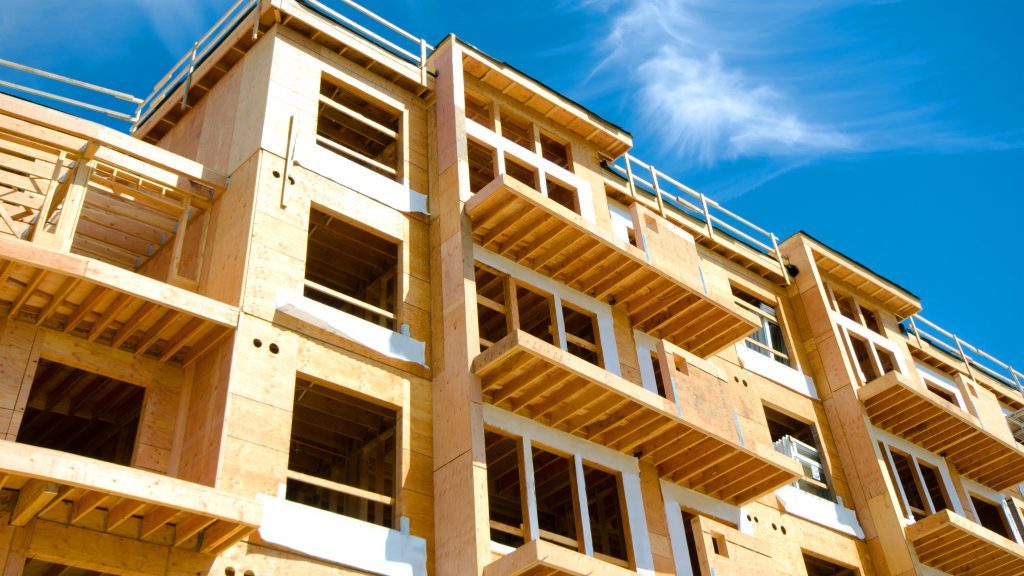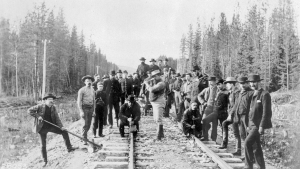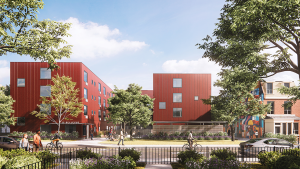As the pace of mass timber’s growth in the midrise market in Ontario picks up, the design and building world faces a learning curve on a number of fronts.
Understanding shear transfer components for lateral load resisting systems, including shearwall hardware and drift calculations, is a case in point.
Brent Bunting, a senior structural engineer at Simpson Strong-Tie Canada, presented a webinar on the subject recently as part of a one-day workshop on Engineering Essentials for Connections in Timber by Wood WORKS! Ontario.
He told the audience that designers have to know how to detail shearwalls — vertical walls made of lumber, structural panels and nails — and diaphragms (floor or roof) to transfer the horizontal forces out of the building and down to the foundation.
Bunting, who has spent 20 years developing connectors and lateral load resistance systems for the Canadian market, said a common problem he sees in shearwalls is where they meet windows and other openings.
“They (designers) are not designing the wall properly by using segments,” he explained. “They are using the full wall but they are not analyzing the full wall correctly.”
The “biggest problem” he sees with installations is at the anchor bolts.
“If you don’t install the anchor bolts in the right spot it makes a big difference when you are trying to put in the rods.”
Bunting pointed out that anchorage to concrete methods are covered under CSA 23.3 NXD, which deals with post-installed and cast-in-place anchors. Finding a post-installed anchorage solution is difficult for midrise mass timber buildings.
He told the webinar audience that “concrete breakout” at embedment is about a 35-degree cone of failure.
“If you are close to an edge your cone of failure will be less.”
He described six failure modes as pullout; concrete breakout; steel failure; side-face blowout; adhesive bond failure; and concrete splitting which can be avoided with proper spacing.
Simpson Strong-Tie Canada has prepared a white paper that covers its testing and offers readers additional reinforcement solutions.
Available on its website, the information offers non-proprietary solutions, which Bunting says are “essentially just using stirrups and reinforcing.” He added anyone can download free anchor design software from its website for various calculations, including for ACI-318 (concrete design) and CSA A23 anchorage D.
The company also will provide training, based on the type of installation being either rod systems or CLT installations.
While Simpson Strong-Tie was not one of the first companies to manufacture CLT connections for the North American market, it has been catching up and last year published a mass timber catalogue that details all of its products, he said.
The catalogue includes a wide range of shear transfer connectors that are tested by a third-party agency with qualifications through the Standards Council of Canada and its U.S. counterpart, Bunting told viewers.
The company offers three types of fasteners for mass timber in North America, including a fully threaded timber screw up to 24 inches long in eight or10 millimetre diameter threads. It markets two steel-to-wood screws.
Angled fasteners are being developed, Bunting added, noting the company will be releasing information soon on new angled washers and straps with slotted holes.
Late last year Simpson Strong-Tie finalized one-hour and two-hour fire testing in the U.S. (ASTM E119). The results will be available on its website shortly.











Recent Comments
comments for this post are closed